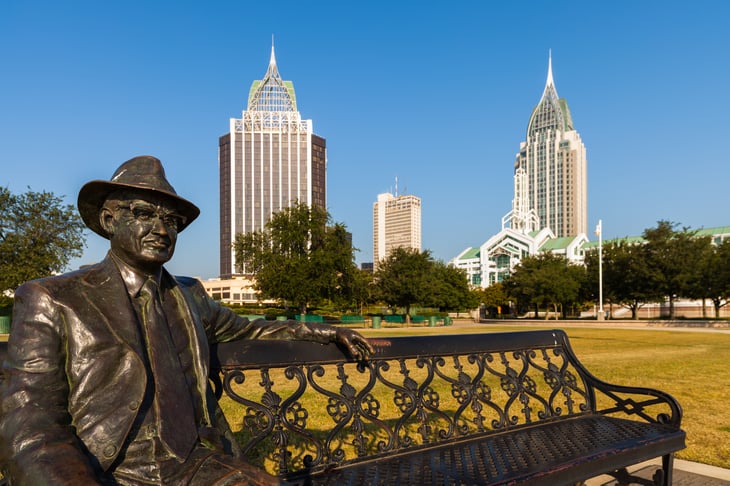
Nobody likes to pay taxes, but we all accept the reality that we pay those fees on everything from our income to houses and many of the goods we buy.
In 13 states, taxes even extend to the food you put on your table. That is to say those states tax groceries.
Read on to find out if your state is among those that tax their residents’ trips to the supermarket.
Note that these are statewide rates. Local governments in these states may have different rates.
Arkansas

Arkansas has a statewide tax on food of 0.125%. In March 2023, a bill was introduced to eliminate the tax, but it died in committee in May 2023.
Illinois

Illinois has a tax on food of 1%. In 2022, the tax temporarily was suspended as part of a 2022 state law known as the Family Relief Plan. That relief ended June 30, 2023.
Virginia

Virginia’s statewide grocery tax fell to 1% in 2023. The tax applies to “food for home consumption and certain essential personal hygiene items,” according to the Virginia Department of Taxation.
Missouri

Missouri’s food tax is 1.225% for “all types of food items that may be purchased with food stamps,” assistance that now is known as the Supplemental Nutrition Assistance Program (SNAP). This includes food and food products for home consumption as well as seeds and plants that produce food for personal consumption.
The statewide tax previously had been as high as 4.225%.
Utah

Utah has a statewide grocery food sales tax rate of 3%. However, the future of the tax is “complicated,” according to the Deseret News.
Part of the tax — 1.75% of the 3% total tax charged statewide, to be precise — could disappear, depending on what voters decide in November 2024. That is when they will be asked to approve an amendment to the Utah Constitution.
Alabama

The bad news is that Alabama is among the states that tax groceries. The good news is that on Sept. 1, 2023, the statewide tax rate on food dropped from 4% to 3% as the result of legislation.
Alabama defines food the same way the federal government’s Supplemental Nutrition Assistance Program (SNAP) does: “any food or food product for home consumption, except alcoholic beverages, tobacco, hot foods, or hot food products ready for immediate consumption.”
Kansas

Kansas has a food tax — but not for long. The tax was reduced from 6.5% to 4% on Jan. 1, 2023. In 2024, it drops to 2% before disappearing in 2025. The Kansas Department of Revenue notes that local sales and use taxes still apply.
Kansas also offers a food sales tax credit that can help offset the cost of the food tax for lower-income taxpayers.
Tennessee

Tennessee has a 4% food tax, plus an additional levy if local governments so choose. In recent years, the tax has been temporarily suspended as part of sales tax holidays.
Hawaii

Hawaii has a general excise tax in lieu of a state sales tax. The rate is 4% for the purchase of most goods and services. That includes food, with the exception of items paid for through the federal Supplemental Nutrition Assistance Program (SNAP) or Women, Infants, and Children (WIC) food vouchers. Some counties add a surcharge of 0.5% for a total tax on food of 4.5% in those parts of the state.
Hawaii Gov. Josh Green has said he would like to see the tax repealed, but a proposal to do that died in the State Legislature in March 2023. Hawaii does offer a food/excise tax credit to lower-income households that helps offset the cost of the tax.
South Dakota

South Dakota’s 4.5% tax on groceries could be on the way out. Gov. Kristie Noem says eliminating the tax is one of her priorities, and separately, a 2024 ballot initiative might put the fate of the tax in the hands of voters.
Oklahoma

Oklahoma’s grocery tax is another that has been in the crosshairs of politicians. However, an effort to eliminate the 4.5% tax stalled in the summer of 2023.
Oklahoma offers a grocery tax credit of $40 per household that can bring down the cost of the tax for lower-income households.
Idaho

Idaho taxes “every retail sale” — including groceries — at 6%. There is an exception for food purchased through the federal Supplemental Nutrition Assistance Program (SNAP) or Women, Infants, and Children (WIC) program.
Residents also get a grocery tax credit to help offset taxes on food. For most residents, the credit averages $100 per person.
Mississippi

At 7%, Mississippi’s food tax is the highest in the nation. Democratic candidate for governor Brandon Presley has vowed to eliminate the grocery tax if elected.





Add a Comment
Our Policy: We welcome relevant and respectful comments in order to foster healthy and informative discussions. All other comments may be removed. Comments with links are automatically held for moderation.